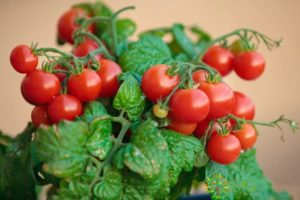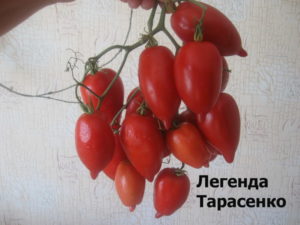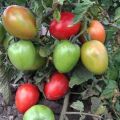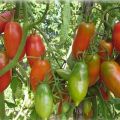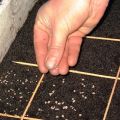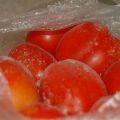The correct timing of sowing tomatoes for seedlings in the Urals
Short, humid, warm summers, partly cloudy, humidity - all these factors determine when to plant tomatoes in a greenhouse in the Urals. The unpredictable weather presents a lot of surprises for gardeners. Here, ideal conditions for tomato growth can be combined with dramatic weather changes.
The average summer temperature in the Subpolar Urals is +30 degrees, which, together with high humidity, abundant solstice, gives good chances, which, in combination with greenhouse conditions, increase many times over.
general information
How to correctly determine the start time of the agricultural season in such variable weather conditions? What are the terms for sowing seeds and seedlings in relation to the Urals?
First, a little geography. The mountain range is a conditional border between Europe and Asia. The maximum temperature in summer varies greatly by area and can reach:
- Pai-Hoi - +6;
- Polar Urals - +30;
- Subpolar Urals - +12;
- Northern Urals - there is snow all year round;
- Middle Urals - +18;
- Mugodzhary - continental dry climate;
- South Ural - +19.
The duration of the summer period is unstable, depends on the region and ranges from 1.5 to several months - a rather harsh climate for sowing tomatoes. But there are secluded places in the Urals where this capricious culture takes root well.
The last planting of seeds must be calculated very accurately. The short summer gives no chance of error. During the season, the culture must fully mature, give full fruits. Basically, early varieties of tomatoes are planted, having previously prepared seedlings.
Preparing for landing
The lunar calendar can be used to select the correct time for landing. It is also called sowing.

It has long been noted that tomatoes grow better with the rising moon. This is not surprising. The moon is the ruler of all water on Earth, affects the movement of the water masses of the oceans, organizes the ebb and flow. Seedlings also use water: the lunar attraction helps her feel a kind of surge of strength.
Seeds
To choose the right tomatoes for seedlings, you need to decide in advance on the seed material. In late autumn, choose large fruits of your favorite variety. Let them ripen. It is best if the tomatoes themselves fall from the bush. It is necessary to store the fruits for a while, then pull out the seeds. Planting begins in March, the deadline is early April.
It is believed that complex hybrids do not produce seeds, which is only partially true. If you take tomatoes for seedlings in the Urals from such a bush, then you can grow wild tomatoes. Many gardeners consciously follow this path in order to see with their own eyes the distant ancestor of all modern varieties.A branchy bush will grow, all covered with small tomatoes - the ancestor of wild tomatoes still growing in South America.

If you pre-prepare the seed, then the seedlings are strong, its shoots are formed faster. To do this, it is enough to place them in hot water (+50 degrees) for 15 - 20 minutes, then in a thick solution of potassium permanganate (15 minutes for disinfection). Rinse in cold water and dry thoroughly. Place in a special nutrient solution with trace elements (sold in any gardening store). After successful germination, usually 3 to 4 days, the seeds are ready to plant.
How to get good seedlings
It is interesting when to sow tomatoes for seedlings, given a short summer. The question is quite relevant: it will take at least 30 - 45 days to form it.
You can use disposable plastic cups with soil to plant tomatoes for seedlings. Usually, several seeds are placed in one glass. The first shoots appear after 2 - 3 days. To prevent the seedlings from stretching, you need to adhere to a temperature of +14 degrees for up to 7 - 10 days.
Spectral illumination is used from the first days after landing. First, around the clock, after 2 - 3 days they turn on for 14 - 16 hours. A pick is made when 2 - 3 full-fledged leaves are formed. After 15 - 20 days, you can start hardening the plant.
Signs of good seedlings:
- height 20 - 40 cm - it all depends on the variety;
- strong, elastic leg;
- rich, dark green color;
- healthy foliage, the color brightens slightly at the edges.
The right time can significantly increase yields: tomatoes in the Urals grow in a short summer. Seedlings are best used with an ovary - this will significantly save time for the formation of full-fledged fruits.
Tomatoes are self-pollinating plants. In natural conditions, this process occurs under the influence of the wind. At home, naturally, a draft is undesirable.
To help the seedlings, you need to stroke it periodically, as if checking the stems for elasticity. A kind of gymnastics will help the plant self-pollinate.
The soil
For planting, you must first prepare the soil:
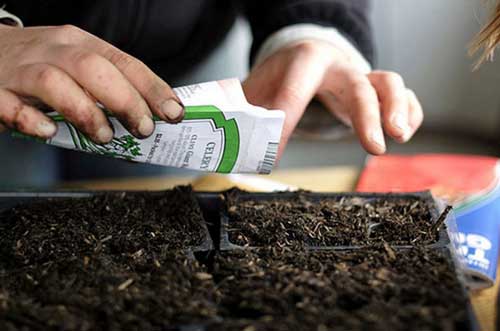
- Organic fertilizers are usually applied in late autumn. Humus is simply scattered over the entire area of the future sowing. It will lie well until spring, enriching the soil with useful elements.
- In the spring, melt water will transfer some of the trace elements into the soil. It's time to add complex mineral fertilizers.
Essential elements for normal growth - nitrogen, potassium, phosphorus.
Complex fertilizers
Complex fertilizers containing these three elements are perfect for plant growth and the formation of full-fledged fruits.
It is recommended to use:
- Ammofoska - in addition to the three above-mentioned minerals, contains calcium, sulfur, phosphorus;
- Diammofoska - in addition to the main elements, contains 8 additional ones;
- Nitroammofoska - nitrogen, potassium, phosphorus, sulfur;
- Nitrofoska - has a three-component composition;
- Ammophos - two-component, consists of nitrogen and phosphorus.
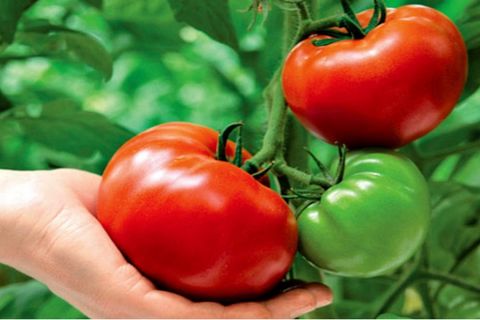
The advantage of complex fertilizers in a wide range of applications. The compositions are suitable for any kind of tomato. You can plant tomatoes of any varieties and use complex fertilizers as top dressing. They enrich the soil with accompanying elements, prevent soil depletion.
One-part fertilizers
Used for spot feeding with one element. It is recommended to use them with extreme caution. An excess of nutrients leads to the development of anomalies. The plant grown in such conditions begins to hurt.
One-component fertilizers include:
- Superphosphate - phosphorus content 20%;
- Double superphosphate - accordingly, phosphorus is approximately twice as much (45%);
- Ammonium nitrate (ammonium nitrate) - a salt of nitric acid, contains a large amount of nitrogen;
- Potassium (potassium) nitrate - potassium nitrate - the main supplier of potassium for the soil.
The advantages of their introduction include individual plant nutrition. Lack of one or more fundamental elements leads to the appearance of characteristic features. Planted plants do not develop well, necrosis or yellowing of foliage may appear. By external signs, the deficiency of the element is determined, and treatment is prescribed.
When using mineral fertilizers, you must follow a few simple rules:
- Do not use a food container for preparing solutions. Pots, cups, glasses and other utensils are best kept away from chemicals. What is nutritious for plants is poison for humans. Even a small concentration of elements that accidentally got into food can lead to gastrointestinal upset or other negative consequences.
- Store in a closed container or container.
- Fertilizers are "sown" or watered at the root - falling on leaves or stems can lead to burns.
- Do not overdose. The plant eats all the food with pleasure, but after that it will start to hurt. Leaves are a good indicator. By external signs, an overdose is determined and the soil is flushed with intensive watering.
- Dry fertilizers are usually added dropwise. This prevents uncontrolled spraying over the area. Warranty feeds the root system.
- Sandy soils reduce the consumption of minerals, clay soils increase.
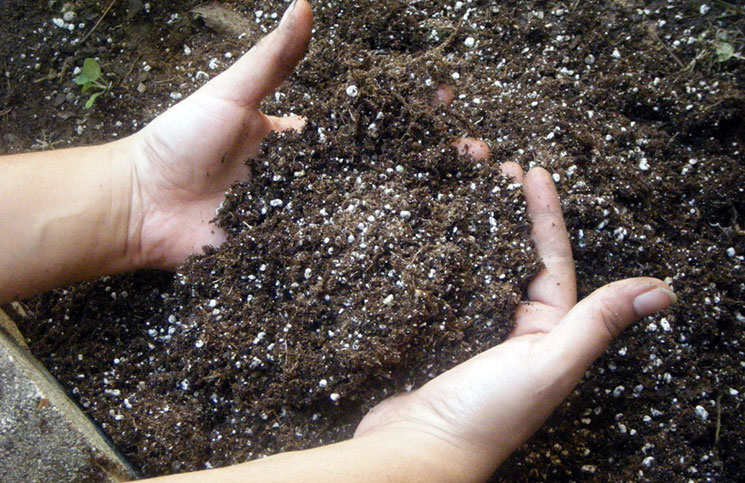
With the combined use of organic and mineral fertilizers, the share of the latter decreases by approximately three times.
Garden bed
I usually grow tomatoes in the so-called warm garden:
- We dig a ditch 20 - 25 cm deep.
- We lay down clean straw: it must be soaked in warm water from a watering can.
- We quickly return the land to its place.
- Cover with black foil.
- It turns out a bed for growing plants in greenhouse conditions.
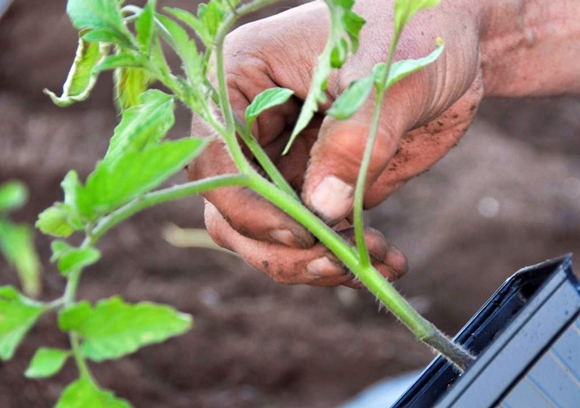
The physics here is pretty simple. We cut off the cold clay layer using straw (10-15 cm high). Its thermal conductivity is sufficient to retain the heat of the upper layer. There remains about 20 cm of land, where the root system of the plant will feel good. The film will retain heat and moisture until disembarkation begins. It remains only to decide when to plant seedlings.
We plant and store
Now you need to choose a warm sunny day. Decide when to plant plants, preferably taking into account the weather forecast for the next few days.
In the evening, tomato seedlings can be planted. Digging holes, planting. We direct the root system of the plant towards the expected watering. Installing the support for the garter. If the bushes are tall, you can immediately tie up the stems. Tomato planting dates vary within small limits, about 5 - 10 days. Given the short summer, it is better not to delay the landing.
Planting is accompanied by abundant watering at the root. We continue this procedure for several days. Usually the adaptation period lasts 2 to 3 days.
The distance between plants is strictly metered. It is about 60 cm. With this planting, the root system has enough space for full development. There is every chance of getting a good harvest.
When planting, do not forget about crop rotation. Tomatoes grow well in place of legumes (peas, beans), which enrich the soil with nitrogen. Accordingly, the amount of this mineral must be reduced when feeding.
Potatoes are a distant relative of tomatoes. Belongs to the nightshade family. There is little nitrogen in last year's potato beds. If tomatoes are sown in this place, then soil bacteria, pests, will quickly reorient and damage the crop.
Next, we organize the schedule:
- glaze;
- top dressing;
- loosening.
Usually, all stages are alternated. An exception can be considered:
- spot fertilization;
- treatment with antibacterial drugs;
- overdose treatment with nutrients;
- insect and pest control.

You can harvest the finished crop taking into account the time for processing the product. Tomatoes ripen perfectly in a dry, cool, dark place. Usually stored until late autumn.
The traditional place for storing tomatoes is the basement. Prepare plastic curly boxes and lay the first layer of straw. Next, lay the tomatoes, leaving a small distance between them. Make the next layer. This will help preserve the harvested crop for a long time.
It is impossible to follow instructions exactly, hoping for a guaranteed yield. In the Urals, even the timing of planting tomatoes for seedlings is not the same every season. A unique experience of vegetable growing, intuition and rules of farming come to the rescue.
